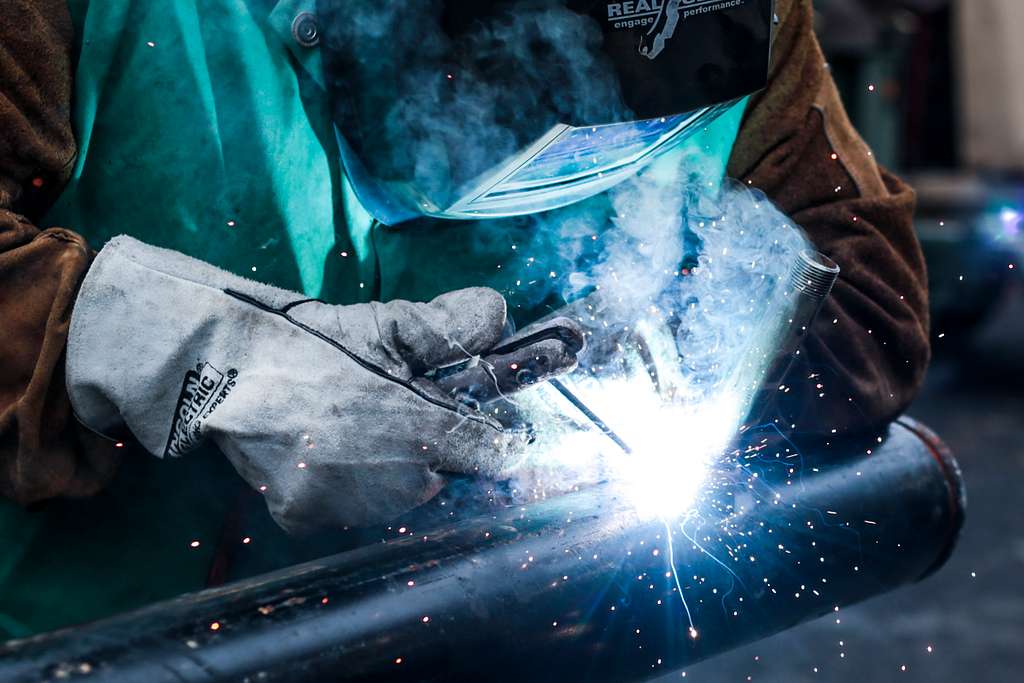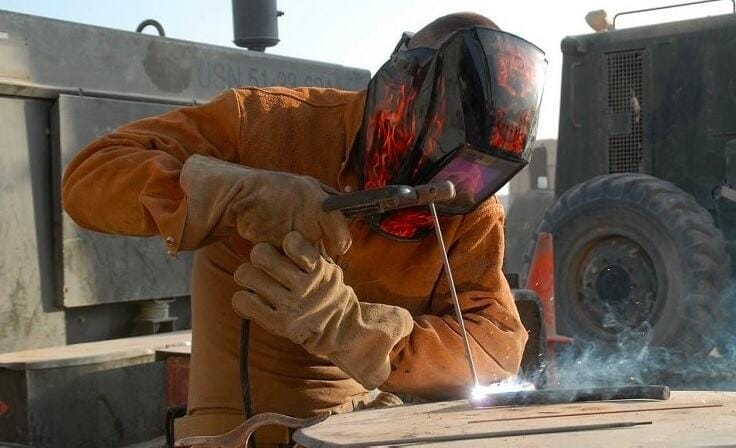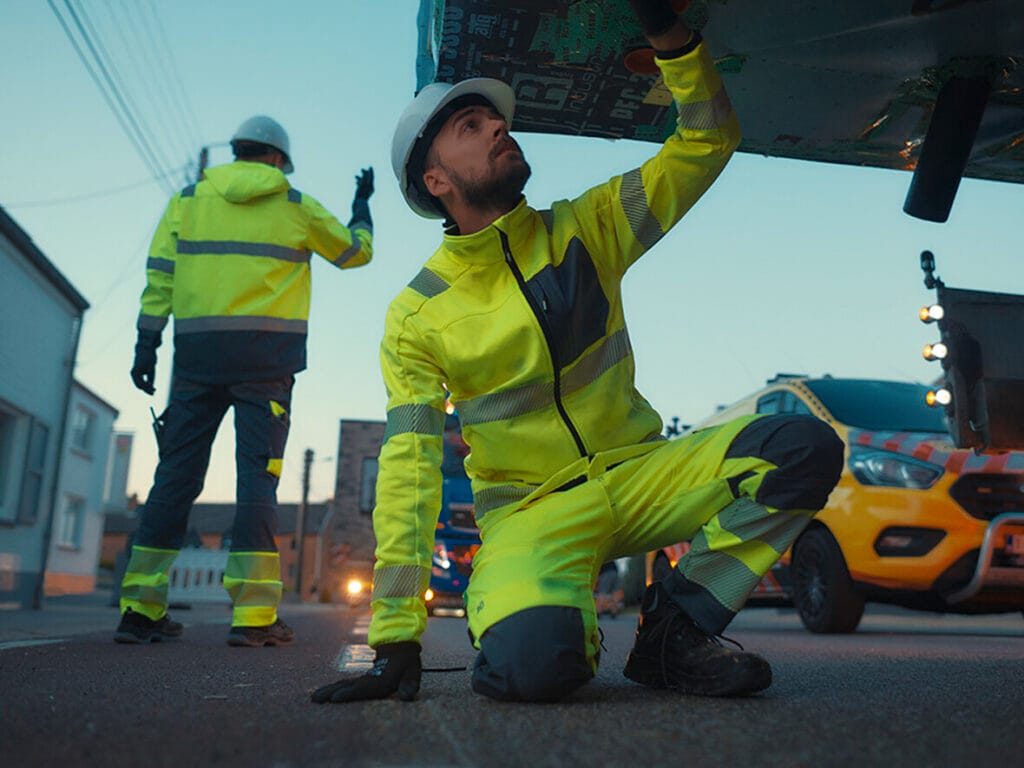
Mining operations in Kazakhstan—especially in copper, iron ore, chromite, and uranium extraction—take place in environments combining high temperatures, abrasive dust, explosive materials, and extreme mechanical hazards. Workers face daily exposure to:
- Open flames and high-temperature processing
- Electrical panels and hot work operations
- Pressurized hydraulic systems
- Heavy machinery and rotating equipment
- Chemical exposure during ore refinement
- Winter temperatures reaching -40°C in remote regions
This comprehensive case study documents how a major Kazakhstan mining operator transitioned from outdated cotton overalls and basic industrial uniforms to advanced flame-resistant (FR) and arc-rated multi-hazard protective workwear—achieving dramatic improvements in:
- Accident reduction
- Worker comfort
- Maintenance cost savings
- Regulatory compliance
- Productivity and morale
The project covers:
- Background of the mining operation
- Risk profile of Kazakh mining conditions
- PPE requirements and applicable standards
- Material selection and technical comparisons
- Implementation process from trial to full deployment
- Cost and ROI analysis with real numbers
- Post-implementation performance results
- Lessons learned and best practices for global mining operators
Google Snippet: Quick Answer
Kazakhstan mining operations require PPE that combines flame resistance, arc protection, cut and abrasion resistance, anti-static properties, and thermal protection for sub-zero winter conditions.
Modern FR garments—using modacrylic, aramid, and multi-layer systems—deliver stronger protection than traditional cotton uniforms while improving worker comfort, durability, and long-term cost efficiency.
1. Why Mining in Kazakhstan Requires Specialized FR PPE
Mining in Kazakhstan operates across some of the most challenging industrial conditions in Eurasia. A typical processing shift may expose workers to:
High Thermal and Fire Hazards
- Open furnace operations
- Welding, torch cutting, and hot mechanical repairs
- Molten slag or metal splash
- Hot exhaust manifolds and combustion equipment
Electrical and Arc Flash Risks
The mining operator’s electrical distribution network includes:
- 6–35 kV transformer stations
- High-energy MCC panels
- Substations requiring live maintenance
- Haul truck and drilling machinery with high current draw
Abrasive and Mechanical Damage
- Conveyor belts
- Ore crushers
- Rotary drilling systems
- Rail axle systems
- Exposed edges and metal fixtures
Extreme Temperature Shifts
Kazakhstan mining belts regularly see:
- +45°C inside furnace-adjacent facilities
- Below –40°C during outdoor winter operations
Clothing must balance:
- Insulation
- Breathability
- Moisture control
- Freedom of movement
Dust, Chemicals, and Process Agents
- Fine silica and ore dust
- Lubricants and hydrocarbons
- Acids from mineral processing
Traditional cotton uniforms:
- absorb contamination
- lose strength when exposed to acids
- ignite easily
- require frequent replacement
2. Regulatory Standards and Compliance Requirements
The mining project required PPE meeting international and Eurasian certifications simultaneously, including:
| PPE Category | Standard | Purpose |
|---|---|---|
| Flame-Resistant Clothing | ISO 11612 | Protection from heat and flame |
| Arc-Flash Garments | IEC 61482-2 & ASTM F1506 | Arc thermal performance and electric hazard qualification |
| Winter Thermal PPE | EN 342 | Sub-zero protective insulation |
| Anti-static Properties | EN 1149 | Discharge control in flammable atmospheres |
| Abrasion and Tear Testing | ISO 12947 / ISO 13937 | Durability verification |
| Chemical Resistance | ISO 6530 | Splash protection |
The mining operator had previously relied on locally sourced cotton garments certified only under outdated ГОСТ standards.
These garments:
- burned rapidly
- melted contaminants into the fabric surface
- failed internal safety audits
- provided no arc protection
The Ministry of Emergency Situations required an upgrade following:
- two electrical injury incidents
- a fire during maintenance on a furnace exhaust line
- five documented mechanical injury claims
Compliance became mandatory.
3. Material Selection and Technical Comparison
The technical engineering team evaluated five classes of fabrics for modern deployment.
3.1 100% Cotton (Traditional Standard Garment)
| Attribute | Result |
|---|---|
| FR Performance | Requires chemical treatment; can wash out |
| Arc Protection | None |
| Durability | Weak in abrasion and tearing |
| Winter Use | Low thermal insulation |
| Maintenance | Heavy contamination retention |
Not recommended for high-hazard mining environments.
3.2 Modacrylic/Cotton Blends (Inherent FR)
This category became the baseline candidate.
| Benefits |
|---|
| Inherent flame resistance |
| Good comfort and breathability |
| Suitable ATPV ratings |
| Acceptable for daily-use garments |
Arc ratings typically 8–12 cal/cm² in single-layer systems.
3.3 Aramid Blends (High-Performance)
Examples include:
- Nomex®
- Kevlar® blends
| Advantages |
|---|
| High tensile and tear strength |
| Superior heat resistance |
| Suitable for blast zones and energized work |
Premium cost, but high durability reduces long-term cost per wear.
3.4 Multilayer Laminated Systems
For:
- Furnace repair
- Hot metal contact
- Emergency response
These systems combine:
- FR face fabrics
- Thermal insulation cores
- Moisture management liners
Typical arc performance:
- ≥ 40 cal/cm²
3.5 Winterized FR Systems for Kazakhstan Climate
A major differentiator for this case:
- Workers cannot survive outdoors in winter without full insulation.
The mining project adopted:
- Softshell FR outer garments
- Multilayer insulation inserts
- Windproof + waterproof membranes
Thermal systems were verified to:
- EN 342 Class 3
- With temperature survivability to –40°C
Inner and outer layers remained:
- fully flame resistant
- arc-rated
- static dissipative
6. Implementation Results: Performance After PPE Upgrade
The shift to antimicrobial uniforms in the Brazilian plant delivered measurable improvements across multiple operational and quality metrics:
✔ 6.1 Reduction in Contamination Risk
Before implementation, the plant reported an average of 3–4 minor hygiene incidents per quarter requiring corrective action.
Within six months after upgrading to antimicrobial PPE, this number dropped to zero recorded contamination events, representing a 100% reduction in line-level contamination issues.
HACCP supervisors also reported fewer surface residues on equipment and touchpoints, reducing the burden of manual cleaning and re-sanitization.
✔ 6.2 Improved Worker Hygiene Compliance
Compliance with dress code and hygiene rules improved significantly after rollout:
- Old uniforms: Often needed washing mid-shift, leading to discomfort and occasional policy deviations
- New antimicrobial sets: Stayed fresh for an entire shift without odor buildup
Workforce hygiene audit scores increased from 87% to 97% within three months, and workers reported higher willingness to follow sanitation protocol consistently.
✔ 6.3 Performance in High-Moisture and Refrigerated Areas
Workers in wet zones (cutting, rinsing, and wash-down cleaning) previously experienced:
- Heavy fabric absorption
- Longer drying times
- Heat loss in cold chambers
The new uniforms delivered:
- 60% reduced moisture retention
- Faster drying even during continuous exposure
- Better thermal balance in +4°C cold rooms
Operators could work longer without requesting warm-up breaks, improving overall productivity.
✔ 6.4 Lower Uniform Replacement Costs
Previous cotton PPE often needed replacing every 2–3 months, especially in cleaning zones where chemical exposure caused rapid fabric breakdown.
After switching to antimicrobial fabrics:
- Average uniform life increased to 8–10 months
- Replacement costs dropped by 38% year-on-year
- Laundry loads decreased due to longer usable intervals between washes
For a facility with 200 employees, total PPE cost savings exceeded USD 17,500 annually.
7. Worker Feedback: What Employees Said
Employees across production lines shared notably positive responses:
Key responses from internal surveys:
| Feedback Theme | Response |
|---|---|
| Comfort | “Feels lighter, doesn’t stink by the end of the shift.” |
| Cooling & Dryness | “I don’t sweat inside like before, even during wash-downs.” |
| Durability | “Stands up to bleach cleaning much better.” |
| Professional Look | “Uniforms look new much longer.” |
The plant’s HR department also noted a morale boost, with workers reporting a sense of professional pride and respect—an often-overlooked benefit in industrial PPE projects.
8. Customer and Audit Advantages
Switching to antimicrobial PPE didn’t just improve internal operations—it made external compliance easier:
📌 Higher Scores in Third-Party Audits
During a scheduled EU customer audit:
- Uniform hygiene and wear lifespan were highlighted as key strengths
- The plant received its highest historical quality audit score
📌 Better Supplier Perception
Customers perceived the plant as:
- More modern
- More quality-driven
- More focused on food safety culture
This helped the plant secure two new long-term contracts with European buyers who specifically prioritized hygiene standards.
9. Lessons Learned and Recommendations
Based on the Brazilian plant’s real experience, the following best practices are recommended for plants planning to upgrade PPE:
✔ Standardize Uniform Types by Risk Zone
High-risk food contact areas may require different fabric properties than logistics or warehousing.
✔ Train Operators on Why the Uniforms Matter
When workers understand the reason, compliance improves naturally.
✔ Monitor Data Before and After
Track:
- Audit scores
- Microbial testing
- Uniform turnover rates
- Laundry cycles
- Worker feedback
Quantified improvement helps justify investment and scale.
10. Conclusion
The Brazilian food plant proved that PPE is not just clothing—it’s a frontline food safety system.
By upgrading to antimicrobial and moisture-resistant uniforms, the factory:
- Reduced hygiene incidents to zero
- Boosted audit performance
- Increased worker comfort and morale
- Cut uniform operating costs by nearly 40%
- Improved customer trust and secured new business
In food processing, where safety is non-negotiable, the right workwear delivers value far beyond the garment itself.
If more factories adopted the same approach, hygiene-driven PPE could become the new standard in modern food manufacturing.
Zion Zhang
Recent Posts
 How Material Science is Redefining Safety in Mining and Oil Fields2025年11月25日Mining sites and oilfield operations remain some of the […]
How Material Science is Redefining Safety in Mining and Oil Fields2025年11月25日Mining sites and oilfield operations remain some of the […] Lightweight Armor for Industrial Workers: Safety Without Bulk2025年11月25日From oil & gas to utilities, mining, logistics, metal […]
Lightweight Armor for Industrial Workers: Safety Without Bulk2025年11月25日From oil & gas to utilities, mining, logistics, metal […] Flame-Resistant vs. Arc-Flash Protection: What’s the Real Difference?2025年11月24日Industrial workplaces—from electrical utilities and […]
Flame-Resistant vs. Arc-Flash Protection: What’s the Real Difference?2025年11月24日Industrial workplaces—from electrical utilities and […] Kevlar, Dyneema, and Beyond: The Next Generation of Protective Fabrics2025年11月24日In the world of industrial safety, personal protective […]
Kevlar, Dyneema, and Beyond: The Next Generation of Protective Fabrics2025年11月24日In the world of industrial safety, personal protective […] Case Study: Brazilian Food Plant That Adopted Antimicrobial Uniforms2025年11月22日In 2023, a mid-sized Brazilian ready-to-eat (RTE) food […]
Case Study: Brazilian Food Plant That Adopted Antimicrobial Uniforms2025年11月22日In 2023, a mid-sized Brazilian ready-to-eat (RTE) food […] Post-Pandemic PPE: Hygiene-First Workwear for a New Era2025年11月22日The pandemic permanently changed expectations for workplace […]
Post-Pandemic PPE: Hygiene-First Workwear for a New Era2025年11月22日The pandemic permanently changed expectations for workplace […]
CONTACT US
- Feel free to contact us any time. We will get back to you as soon as we can!
- +86-17303331701
